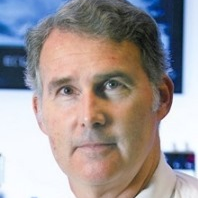Limits to the Second Law of Thermodynamics: Experiment and Theory
A special issue of Entropy (ISSN 1099-4300). This special issue belongs to the section "Thermodynamics".
Deadline for manuscript submissions: closed (31 December 2016) | Viewed by 49932
Special Issue Editor
Interests: the second law of thermodynamics; retrocausation; nanotechnology; plantary formation; plasma physics
Special Issues, Collections and Topics in MDPI journals
Special Issue Information
Dear Colleagues,
This Special Issue will collect a limited number of selected papers presented at the symposium “Limits to the Second Law of Thermodynamics: Experiment and Theory” at the 97th Annual Meeting of the Pacific Division of the AAAS, which was held at the University of San Diego, CA, USA, 14–17 June, 2016. Symposium web site: http://associations.sou.edu/aaaspd/2016SANDIEGO/Symposia16.htm.
The second law of thermodynamics is foundational to science, engineering and technology. During the past two decades, more than two dozen challenges to it have been advanced into the general scientific literature by research groups worldwide. In recent years, several have undergone laboratory test, their results indicating the second law might not be universal. In this symposium, the current experimental and theoretical status of the second law were explored.
Topics included Maxwell's demon, recent experimentally-testable second law challenges, quantum decoherence, the arrow of time, black holes, and developments in the theory of nonequilibrium systems. Special attention was paid to theories and experiments addressing the question of the second law's universality.
Prof. Dr. Daniel P. Sheehan
Guest Editor
Manuscript Submission Information
Manuscripts should be submitted online at www.mdpi.com by registering and logging in to this website. Once you are registered, click here to go to the submission form. Manuscripts can be submitted until the deadline. All submissions that pass pre-check are peer-reviewed. Accepted papers will be published continuously in the journal (as soon as accepted) and will be listed together on the special issue website. Research articles, review articles as well as short communications are invited. For planned papers, a title and short abstract (about 100 words) can be sent to the Editorial Office for announcement on this website.
Submitted manuscripts should not have been published previously, nor be under consideration for publication elsewhere (except conference proceedings papers). All manuscripts are thoroughly refereed through a single-blind peer-review process. A guide for authors and other relevant information for submission of manuscripts is available on the Instructions for Authors page. Entropy is an international peer-reviewed open access monthly journal published by MDPI.
Please visit the Instructions for Authors page before submitting a manuscript. The Article Processing Charge (APC) for publication in this open access journal is 2600 CHF (Swiss Francs). Submitted papers should be well formatted and use good English. Authors may use MDPI's English editing service prior to publication or during author revisions.






